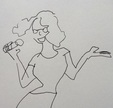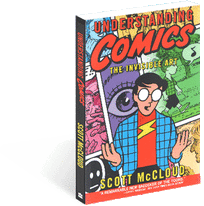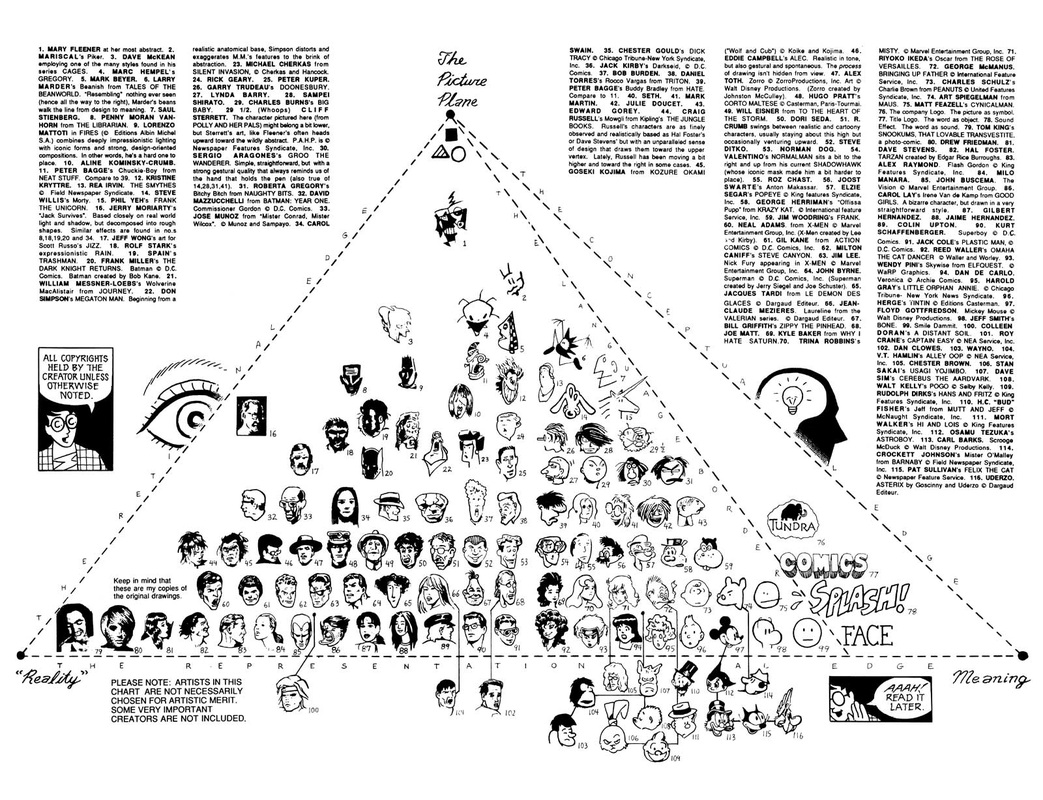Design and framing
 Ellen Lupton
Ellen Lupton I learned from Ellen that visual design involves not only vision but also words, and that design can be extremely funny. Ellen thinks that design goes well beyond illustration, or pragmatic applications, it helps us telling stories. She illustrated her theory with many examples of visual stories ending up unexpectedly (misdirection), triggering hilarity.
Beyond the fact that she was a highly entertaining speaker (how much fun I had!), here I was again, wondering how the verbal and visual processes interact in the creative brain. Where does the story start: verbally or visually? What comes first, the chicken or the egg? It reminded me of the presentation of Deborah Aschheim, where it was difficult to differentiate both processes that were intertwined to create a piece of art.
In this case Ellen showed us how to manipulate both to create a humorous story line. It reminded me of the reflections of Scott McLoud on sequential art (comics, graphic novels etc). Sequential art is a very good example where both visual and verbal languages are used to create a story, that can be extremely powerful. Scott McLoud analyzed the language of sequential art at length in his books, especially the first one: Understanding Comics, that was a revelation to me (I love comics and graphic novels).
Beyond the fact that she was a highly entertaining speaker (how much fun I had!), here I was again, wondering how the verbal and visual processes interact in the creative brain. Where does the story start: verbally or visually? What comes first, the chicken or the egg? It reminded me of the presentation of Deborah Aschheim, where it was difficult to differentiate both processes that were intertwined to create a piece of art.
In this case Ellen showed us how to manipulate both to create a humorous story line. It reminded me of the reflections of Scott McLoud on sequential art (comics, graphic novels etc). Sequential art is a very good example where both visual and verbal languages are used to create a story, that can be extremely powerful. Scott McLoud analyzed the language of sequential art at length in his books, especially the first one: Understanding Comics, that was a revelation to me (I love comics and graphic novels).
I find particularly interesting his theory about how the visual language interacts with the verbal language to create the narrative. There are three axes in his "triangle" (picture below): the top of the triangle is the picture plane (a visual and artistic term). I see the bottom left as "visual" (realistic representation of reality) and the bottom right as "verbal" (words and simplified or symbolistic representations of reality). What an original and meaningful way to reframe SEEING and KNOWING! You can visit more of Scott McLoud's work online. Else I would love to have him contribute to an upcoming Conference of Neuroesthetics. Maybe in collaboration with Ellen?
This is part of a series of posts on the 11th International Conference on Neuroesthetics (September 2014).


 RSS Feed
RSS Feed